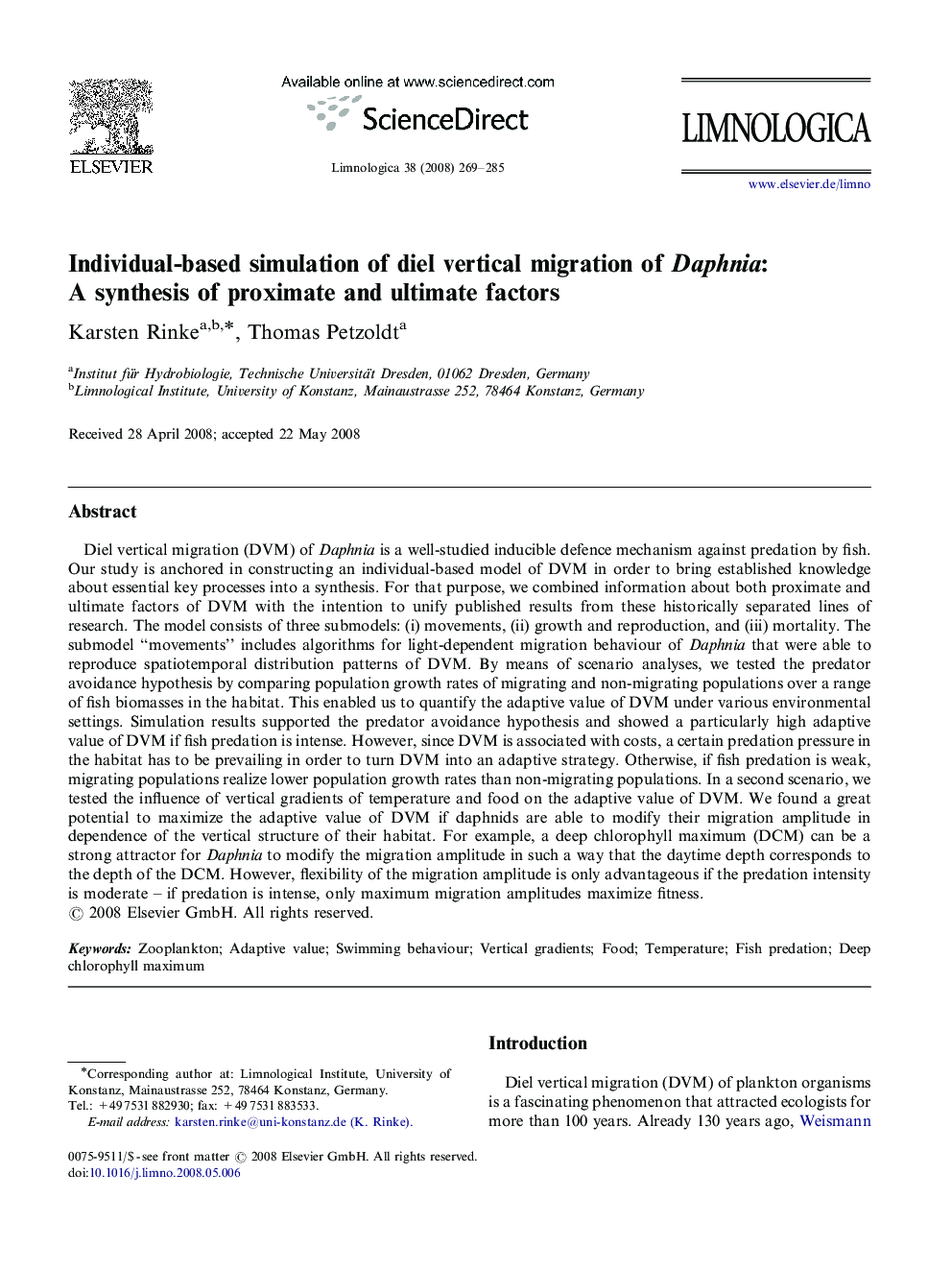| کد مقاله | کد نشریه | سال انتشار | مقاله انگلیسی | نسخه تمام متن |
|---|---|---|---|---|
| 4400686 | 1618580 | 2008 | 17 صفحه PDF | دانلود رایگان |

Diel vertical migration (DVM) of Daphnia is a well-studied inducible defence mechanism against predation by fish. Our study is anchored in constructing an individual-based model of DVM in order to bring established knowledge about essential key processes into a synthesis. For that purpose, we combined information about both proximate and ultimate factors of DVM with the intention to unify published results from these historically separated lines of research. The model consists of three submodels: (i) movements, (ii) growth and reproduction, and (iii) mortality. The submodel “movements” includes algorithms for light-dependent migration behaviour of Daphnia that were able to reproduce spatiotemporal distribution patterns of DVM. By means of scenario analyses, we tested the predator avoidance hypothesis by comparing population growth rates of migrating and non-migrating populations over a range of fish biomasses in the habitat. This enabled us to quantify the adaptive value of DVM under various environmental settings. Simulation results supported the predator avoidance hypothesis and showed a particularly high adaptive value of DVM if fish predation is intense. However, since DVM is associated with costs, a certain predation pressure in the habitat has to be prevailing in order to turn DVM into an adaptive strategy. Otherwise, if fish predation is weak, migrating populations realize lower population growth rates than non-migrating populations. In a second scenario, we tested the influence of vertical gradients of temperature and food on the adaptive value of DVM. We found a great potential to maximize the adaptive value of DVM if daphnids are able to modify their migration amplitude in dependence of the vertical structure of their habitat. For example, a deep chlorophyll maximum (DCM) can be a strong attractor for Daphnia to modify the migration amplitude in such a way that the daytime depth corresponds to the depth of the DCM. However, flexibility of the migration amplitude is only advantageous if the predation intensity is moderate – if predation is intense, only maximum migration amplitudes maximize fitness.
Journal: Limnologica - Ecology and Management of Inland Waters - Volume 38, Issues 3–4, 22 October 2008, Pages 269–285